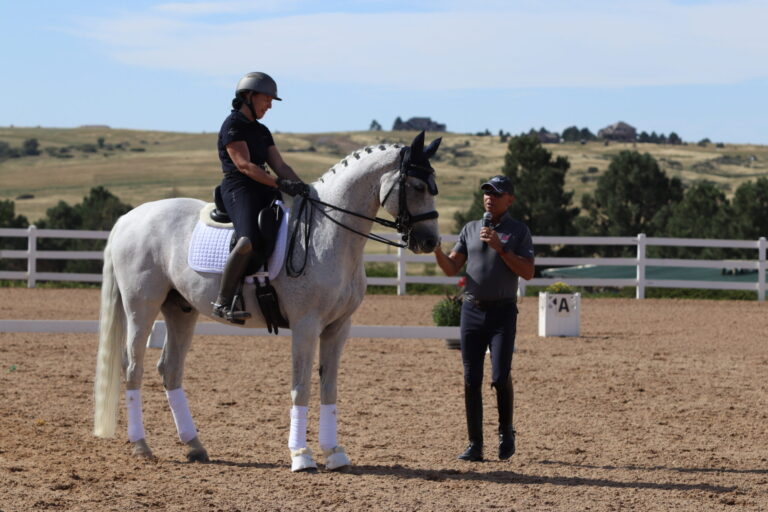“It’s good, but you can make it better.” This was a phrase heard repeatedly from Steffen Peters at a two-day clinic at Raven Hill Farms in Florida, New York.
The five-time Olympian coached a group of talented horses and riders, but his keen eye for the details and refusal to compromise helped them develop even more quality. There were some common themes among the rides with tips and perspectives that can be utilized regardless of the horse and rider’s level of training.
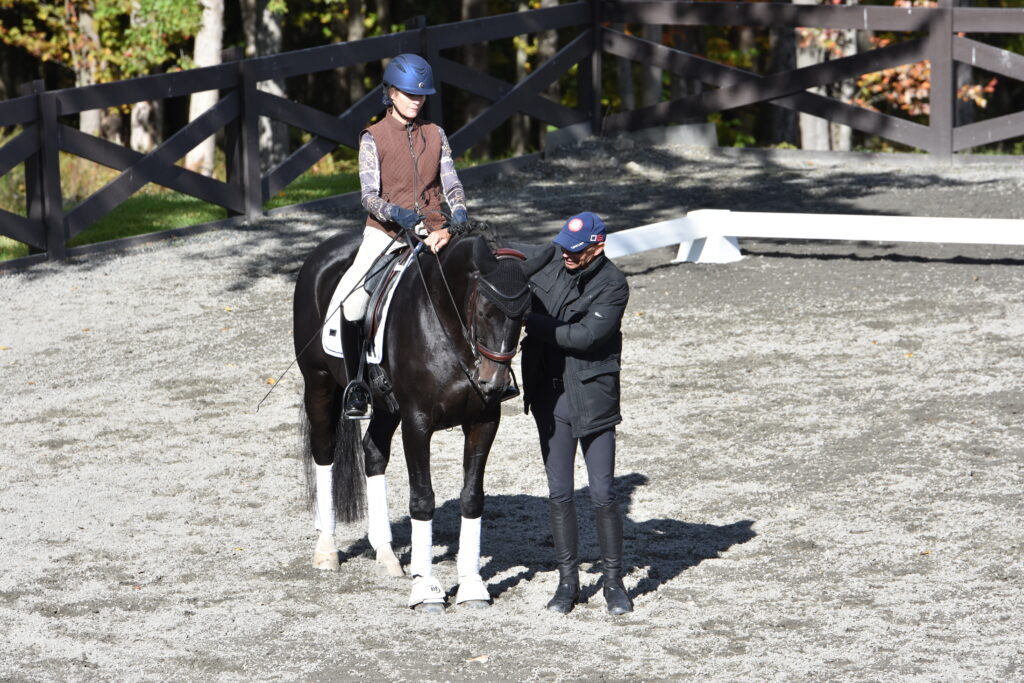
© Stephanie J. Ruff
Mindful Training
Throughout the event, Peters stressed thinking like a horse instead of like a human. Often, things are logical to a horse that the rider may not consider. For example, after doing exciting canter work or flying changes, the horse may need some time to settle into a quality walk, especially if he is sensitive and forward-thinking.
In addition, Peters reminded the riders, “Collection is secondary. Energy and suppleness are number one.” He wanted everyone to understand that the horse “letting go” is not necessarily just in a physical or biomechanical sense. Many horses also must let go mentally, and that can take some time.
He also said not to struggle through a movement. If the rider is having trouble with something, then make it simpler. Have a plan A, B and C for the horse and always reward when he does something right.
Peters talked about how many people ask him for exercises they can do to build a horse’s physical strength. He thinks that increased strength is a positive side effect of correct work with mindful training. It happens throughout the ride and not just with any particular exercise.
Test the Horse’s Sensitivity
Peters was adamant that the rider not carry the horse around. His premise was that the rider sets up the movement, tests the sensitivity of the horse and then sees if the horse can carry on with the movement on his own. He stressed that movements must become reliable at home so the rider can count on them in the show ring.
While pushing the horse when he’s behind the leg is tempting for many riders, it is not beneficial. Stay picky about the reaction to the leg and hand. Allowing the horse to make a mistake and then catching it provides an excellent training opportunity. But Peters stressed that the rider’s timing must be quick to fix the mistake. Otherwise, the horse won’t learn.
Additionally, a horse coming against one leg and being heavier on one rein versus the other is not uncommon. In one of the rides, the horse was against the right rein and right leg. This compromised his energy and suppleness, which Peters said to never do. The horse must move forward and away from the leg, and he must be even and supple on both reins. “And just because it’s the outside rein, he shouldn’t be rigid on that,” Peters said.

© Stephanie J. Ruff
Riding inside leg to outside rein while tracking right may not be beneficial in this situation, he explained. “Let’s not forget when they’re not perfectly even on both reins—and 90% of all horses are not even on both reins—then I would not ride him in a way where he can get a hold of that rein so quickly.”
Instead, when the horse was traveling left, Peters had the rider leg-yield a few steps off the right leg. Then once the horse was off the track, she rode shoulder-in right. He also encouraged her to slightly cut her corners on the short sides and ride the horse in counter flexion. “I want you to have the feeling at any time you could touch the right rein and get him to yield to your right leg, consequently yielding to your right rein.”
Peters acknowledged the rider’s desire to make the horse’s hind legs quicker. “Of course, we want to get to the hind legs. We want to engage him. But this can happen only when we have our horses truly supple and thinking sensitively to the leg. And that goes for everything. Horses need to be just as adjustable to the reaction to the rein and the seat. And then we can do everything.
“I get so many questions. ‘What exercise can you show me to get this and that?’ And I say, ‘Look, if your horse is really correct on the aids and listens sensitively to your leg, the seat and the rein, it doesn’t matter what exercise you do. It’s going to be productive. But if you do an exercise where one of those three items are missing, it doesn’t matter what exercise you do, it’s not going to help the horse or the rider.’ So, it really comes down to you to saying, ‘This is OK, but it’s not quite reactive enough.’”
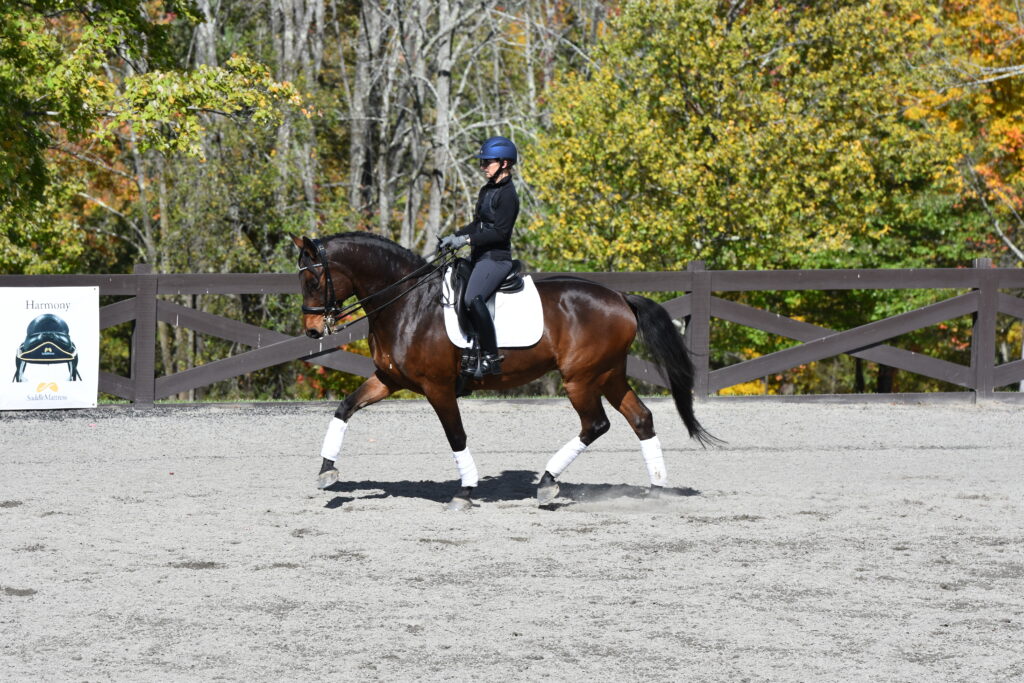
© Stephanie J. Ruff
Focus on the Walk
Peters said that he might ride his horse for an hour, but only about 20 minutes of that is collected work. He also suggests setting the horse up for success and doing the harder, collected work earlier in the ride. Then he said he spends about 50% of the remaining ride time in walk. The quality of the walk and seamlessly going from extended walk to collected walk is extremely important. Typically, horses slow down in the walk so he said to plan for that. In the extended walk, he said not to settle for a 6. Instead, work on getting the most out of the horse and ask for an 8.
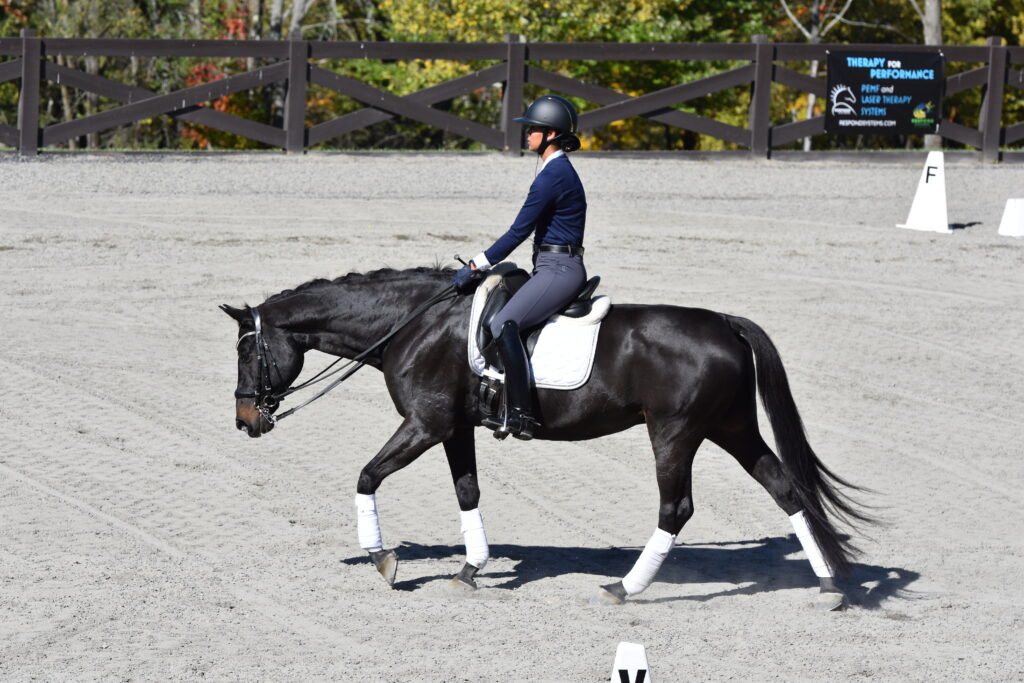
© Stephanie J. Ruff
With a forward-thinking horse, the rider may need to be more tactful in the walk. A horse that gets quick in the walk needs to focus on a slower rhythm, but not a slower pace. If a half-halt doesn’t work, then he said to ride a full halt.
In the halt, the horse should stand square and on the bit. If the rider gives the reins in halt, the horse shouldn’t move. A sensitive horse often needs to stay in halt longer so that he mentally relaxes. Peters emphasized not to lower the standards in the training and take as much time as needed for the horse to let go of tension.
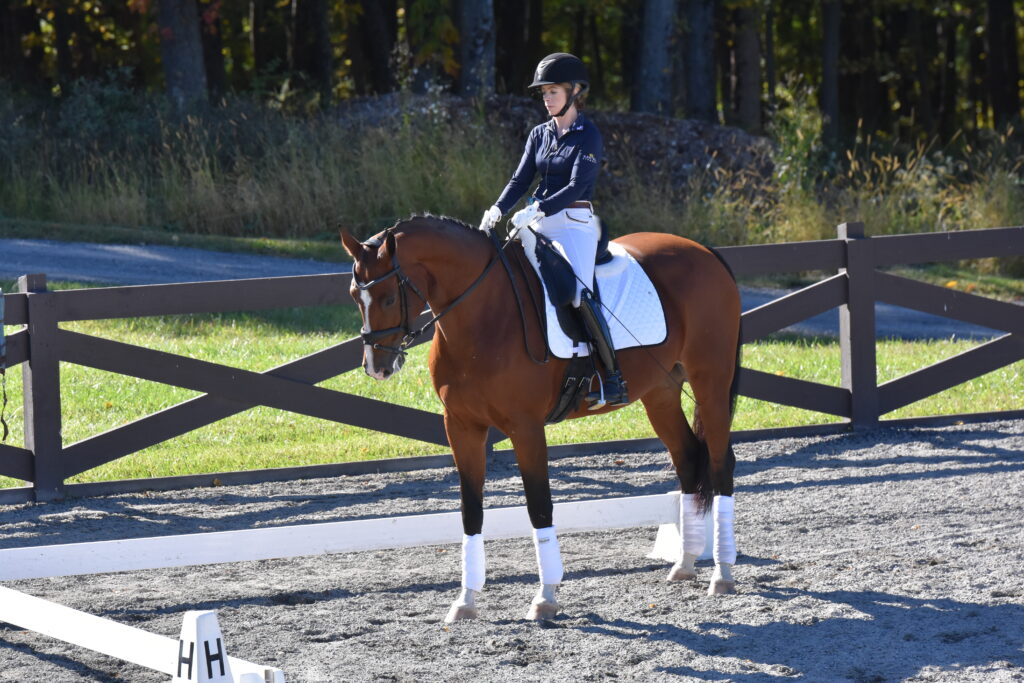
© Stephanie J. Ruff
Transitions
Continuing with the walk, Peters also stressed the importance of the walk–canter transition. If the horse struggles with the walk–canter transition, he will struggle with the flying change. Therefore, Peters wanted high quality walk–canter transitions before focusing on the flying change.
If the horse takes trot steps when a rider asks for canter from the walk, Peters suggested going forward first (in trot or canter) and then repeating the transition. Don’t just bring the horse back to walk and try again. That may confuse the horse by first asking him to go forward and then slowing him down.
He also believes that the quality of the gaits improves by riding transitions within the gaits. A slight lengthening and then coming back, done correctly and in balance, is beneficial. He equated a downward transition to a plane landing. The landing gear must be under the body and come down first. If the nose comes first, “it doesn’t go so well.”
One mare, formerly a jumper now switching to dressage, was strong and pulled. Peters had a specific exercise to help improve her suppleness. On the long side, the rider asked for a small lengthening in rising trot. Then she went to sitting trot to bring the horse back and gave both hands forward to release the reins. Peters wanted to see the horse stay briefly in the same frame or follow gently to the hand, but not press against the hand.

© Stephanie J. Ruff
“In Germany a long time ago, we used to have tests where we needed to ride a lengthening, and at the end of the lengthening, we bring a horse back and give both reins. Similarly, in USEF Third Level, Test 2, there is a release of both reins for five to six strides on a 20-meter circle in collected canter.
“She’s responsive to the legs, so that’s good,” Peters said. “You allow her to go a bit forward without really pushing her, and then you bring her back. That’s a good thing, as long as the energy doesn’t end up in the bridle.
“If she is not overly sensitive to the whip, then use the whip gently when you come back from the rising trot to the sitting trot,” Peters continued. “I never like to use the whip to send a horse forward. I like to use it to engage the hind legs when I bring a horse back from a lengthening so that it’s a helpful tool to close her up a bit.”
Final Thoughts
Throughout the rides, Peters was demanding but in a calm, positive, focused way. When something went wrong, it was “no problem.” He emphasized that it was OK to take a moment, breathe, think and try again. Admittedly, it can be easier said than done, but a perspective worth pursuing.
Watch a free video from the clinic at OnDemand.DressageToday.com.
This article originally appeared in the Fall 2023 issue of Practical Horseman.





